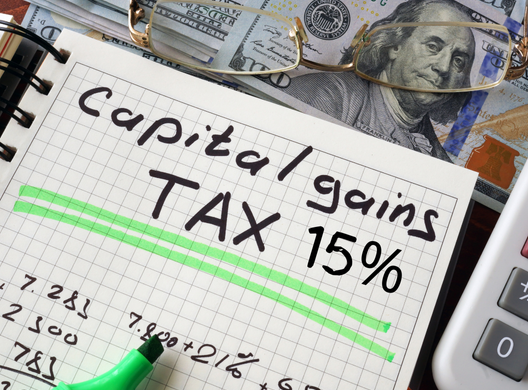
Among the key aspects of capital gains taxation is the 15% tax bracket, which applies to many investors and can significantly impact your tax liability. Working with your Certified Public Accountant (CPA) to understand and navigate the intricacies of capital gains taxation is crucial for maximizing your tax efficiency.
What are Capital Gains?
Capital gains refer to the profits made from the sale of a capital asset, such as stocks, bonds, real estate, or other investments. The gain is calculated by subtracting the asset’s purchase price (or “basis”) from the sale price. Capital gains are classified into two categories:
- Short-term capital gains: Profits from the sale of an asset held for one year or less. These are taxed at ordinary income tax rates.
- Long-term capital gains: Profits from the sale of an asset held for more than one year. These are taxed at preferential rates of 0%, 15%, or 20%, depending on your taxable income and filing status.
The 15% Tax Bracket for Long-Term Capital Gains
The 15% tax rate is the most commonly applied rate for long-term capital gains and dividends. This rate applies to taxpayers whose income falls within certain thresholds. Here’s how the thresholds are set based on filing status for the 2024 tax year:
- Single: Taxable income between $47,025 and $518,900.
- Married filing jointly or qualifying widow(er): Taxable income between $94,050 and $583,750.
- Married filing separately: Taxable income between $47,025 and $291,850.
- Head of household: Taxable income between $63,000 and $551,350.
These thresholds are subject to annual adjustments for inflation. Taxpayers whose income falls below the lower limit of these ranges may qualify for a 0% capital gains tax rate, while those above the upper limit are subject to the 20% rate.
How Does the 15% Tax Rate Affect You?
If your taxable income falls within the 15% bracket for long-term capital gains, your capital gains will be taxed at a more favorable rate compared to your ordinary income. This can result in substantial tax savings, particularly for those with significant investment income.
EXAMPLE:
Consider a single taxpayer with a taxable income of $60,000, which includes a $10,000 long-term capital gain from selling stock. Since their total income is within the $47,000 to $501,600 range, the $10,000 gain is taxed at the 15% rate. The tax on the capital gain would be $1,500 (15% of $10,000), which is lower than if it were taxed at the ordinary income tax rate.
Why the 15% Rate Matters
The 15% tax bracket for long-term capital gains provides an incentive for taxpayers to invest and hold assets for the long term. This preferential rate is intended to encourage investment and economic growth. For investors, understanding how this rate applies can help in making informed decisions about when to sell investments and how to manage tax liability effectively.
Planning Considerations
To maximize the benefits of the 15% tax rate on capital gains:
- Timing of sales: Consider holding assets for more than a year to qualify for long-term capital gains treatment.
- Tax-loss harvesting: Offset gains with losses to reduce overall capital gains.
- Strategic asset location: Hold investments that generate capital gains in taxable accounts and those that generate ordinary income in tax-advantaged accounts.
The 15% tax bracket for long-term capital gains is a key component of tax planning for investors. By understanding the income thresholds and the benefits of this preferential rate, you can make informed decisions about your investments and manage your tax liability effectively. As always, consulting with a tax professional is recommended to ensure that you are making the best choices for your financial situation.
Additional Resources:
Read our article, Reducing Capital Gains to Zero.
For more information, please refer to the IRS’s official guidance on capital gains and losses: IRS Topic No. 409 — Capital Gains and Losses




